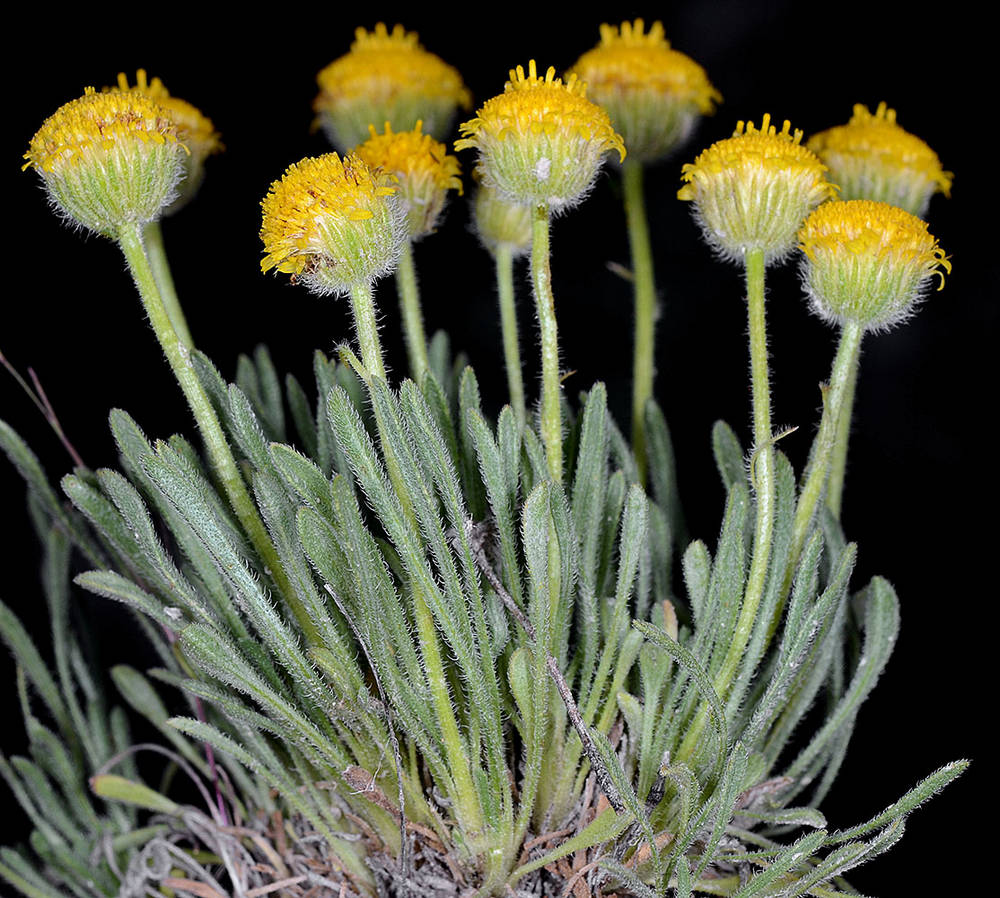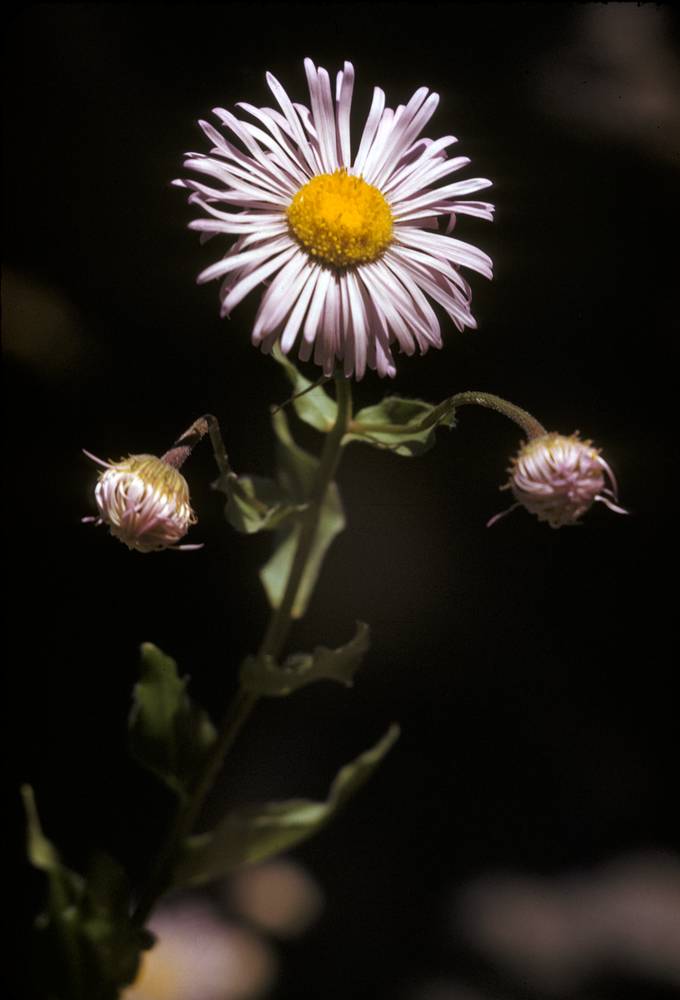Erigeron chrysopsidis
Erigeron
dwarf yellow fleabane
daisy, fleabane
erect; hirsute, eglandular to minutely glandular.
usually erect to ascending, occasionally decumbent, glabrous to densely hirsute, glandular or eglandular.
basal and/or cauline;
basal sometimes withering by flowering, alternate, broadly obovate to oblanceolate to narrowly spatulate to linear;
margins entire, lobed, or toothed;
surfaces glabrous to densely hirsute, glandular or eglandular;
cauline well developed or ± reduced distally, sessile or petiolate.
persistent in dense clusters, linear to narrowly oblanceolate, 10–80 × 1–3 mm;
margins entire with hispid hairs;
surfaces hirsute to hispid, sometimes nearing strigose.
abruptly reduced to (0)1–3 linear bracts.
heads solitary on scapes or scape-like stems or few to many in corymb-, raceme-, or panicle-like arrays.
4–7 × 10–16 mm.
turbinate or campanulate to hemispheric.
flat to conic, pitted;
paleae 0.
20–60;
corollas with well-developed yellow rays, 4–8 × 0.5–2 mm, or tubular and short, or rays lacking.
0 or in 1(2) series, pistillate;
rays usually strap-shaped, sometimes filiform, sometimes very short or lacking, white, pink, lavender, purple, blue, yellow, or cream-colored.
corollas 4–5 mm.
usually bisexual;
corollas short, yellow.
in 2–3 series, sparsely to moderately hispid-villous, often minutely glandular.
usually in 2–3 series, numerous, often with a darkened medial or apical area;
surfaces glabrous to densely hirsute, glandular or eglandular.
2–3 mm, moderately strigose;
inner pappi of numerous barbellate bristles.
± oblong, flattened to ± cylindric, 2–7-veined, pappi of 2 series, outer of crowns; scales, or short bristles, inner of usually antrorsely barbellate, often accrescent; bristles, sometimes lacking.
1, radiate or disciform.
radiate, disciform, or discoid.
Erigeron chrysopsidis
Erigeron
Western United States. 3 varieties.
Temperate areas nearly worldwide. ~390 species; 40 species treated in Flora.
Erigeron needs a modern generic revision. There is little consistency in the amount of variation warranting specific status. often, there is greater morphological variation within species (particularly among varieties) than between species. Many species are defined by morphological minutia and/or a single character (e.g., direction of stem hairs). Heads with both peripheral pistillate (ray) florets (in one or two series) and central disc florets (radiate heads) are most common. Heads lacking obvious ray florets may have inconspicuous or missing pistillate rays (disciform heads: E. aphanactis, E. chrysopsidis var. austiniae) or the pistillate flowers may actually be absent (discoid heads: E. bloomeri, E. inornatus, E. petrophilus). Pistillate flowers lacking conspicuous rays may be obscured by the involucres or adjacent disc floret pappi. Close inspection under magnification is needed before determining that the pistillate flowers are truly missing. Some individuals, especially if sterile, depauperate, or of poor quality, are not identifiable without direct comparison with reference material, if at all. The rays of pistillate flowers may change color upon drying; it is important to record flower color at time of collection. Due to shrinkage and curling of the pistillate flower rays on dried specimens, care must be taken when assessing whether rays are strap-shaped (usually greater than 0.5 mm wide) or filiform (less than 0.5 mm wide).
James Riser, Stephen Meyers




